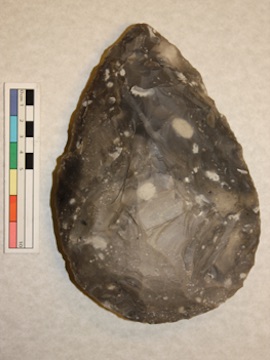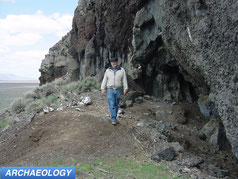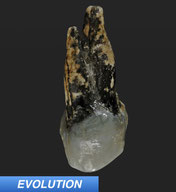
Around 1.75 million years ago there was a technological shift on par with the lunar landing. The stone tool technology called Oldowan and consisting of very simply flaked tools, that hominins created and used for 800,000 years, was abandoned in favor of Acheulian technology, far more complex and difficult to make.
What allowed early humans to jump from simple flake tools to handaxes and cleavers? The prevailing hypothesis has linked advanced tool making with the advent of language capabilities, a kind of co-evolution of neural pathways allowing for the two behaviors. Newly published research by a group of neuroarchaeologsts, however, suggests that advanced tool making may be more closely linked to cognition associated with modern piano playing.
Researchers (Putt et al.) from the University of East Anglia’s School of Psychology, The Stone Age Institute at Indiana University, and the Department of Anthropology at the University of Iowa conducted a study on 31 people wherein they mapped individual brain activity while teaching participants to make Oldowan and Acheulian tools.
All participants learned to make the tools by watching the same videos of skilled tool makers in action. However, 16 participants watched the videos on mute so as not to receive verbal instruction. Researchers then used functional near-infrared spectroscopy to image brain activity in real time as participants made tools.
Putt et al. report that the neural networks specific to language in modern humans were only activated in participants receiving verbal tool making instructions. They also report that neural networks activated when making tools, e.g. visual memory, future planning, are the same as those activated when playing the piano, leading them to conclude that *“Acheulian toolmaking…may have more evolutionary ties to playing Mozart than quoting Shakespeare.”
Their work was published in May in Nature Human Behavior.
Putt, Shelby S., Sobanawartiny Wijeakumar, Robert G. Franciscus, and John P. Spencer. “The functional brain networks that underlie Early Stone Age tool manufacture.” Nature Human Behavior. Published online May 8, 2017 DOI: 10.1038/s41562-017-0102.
*Quote from Putt et al. 2017, abstract: sentence 6, line 16.
Faisal A, Stout D, Apel J, Bradley B (2010) The Manipulative Complexity of Lower Paleolithic Stone Toolmaking. PLoS ONE 5(11): e13718. https://doi.org/10.1371/journal.pone.0013718.



